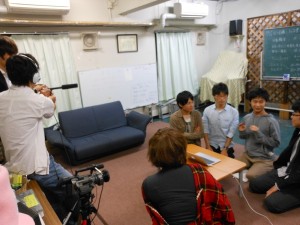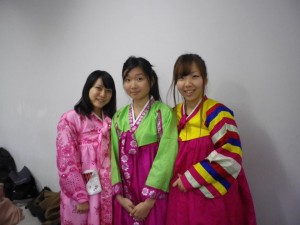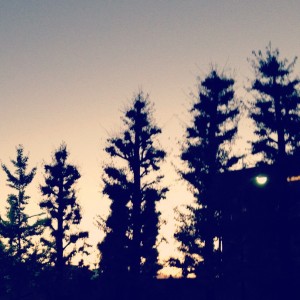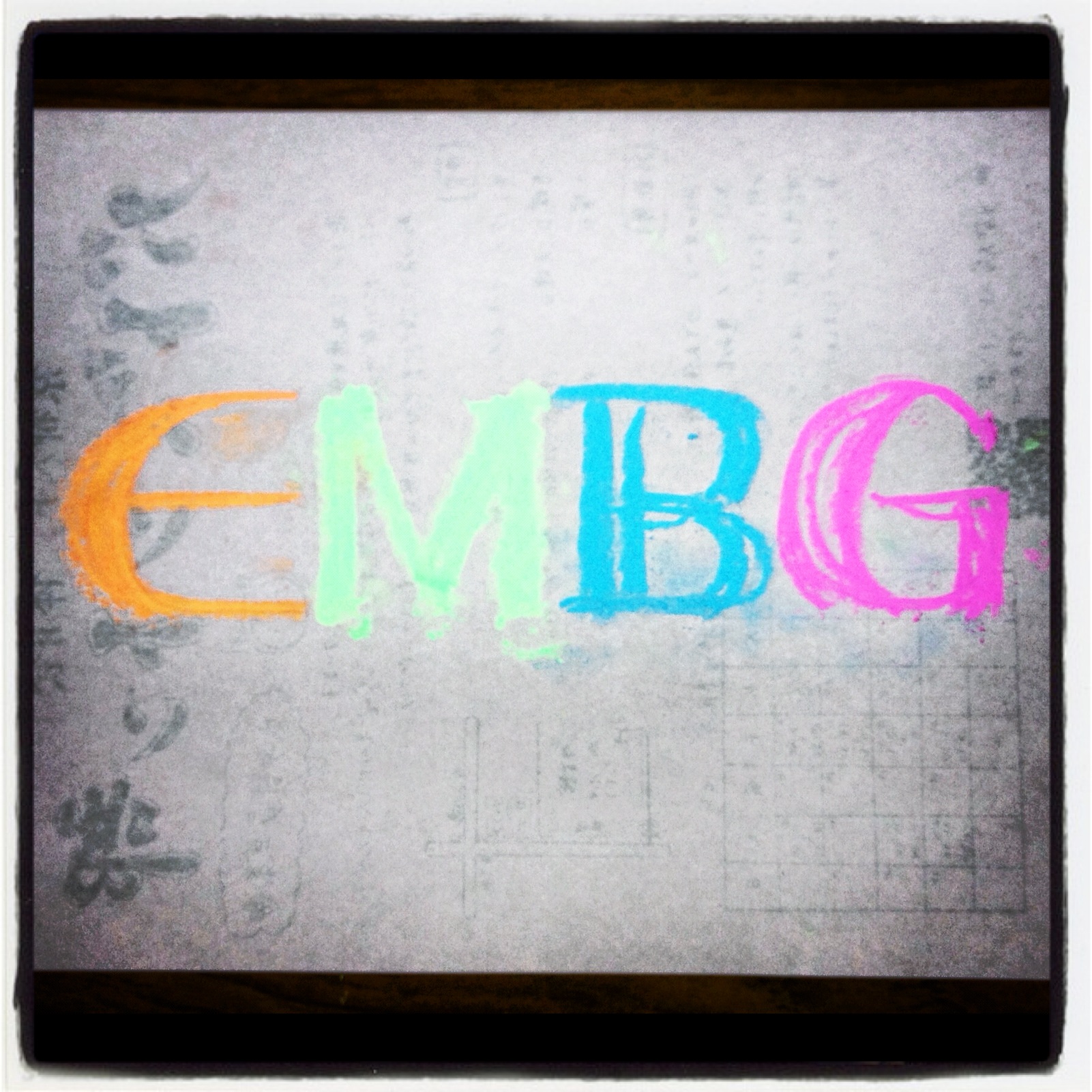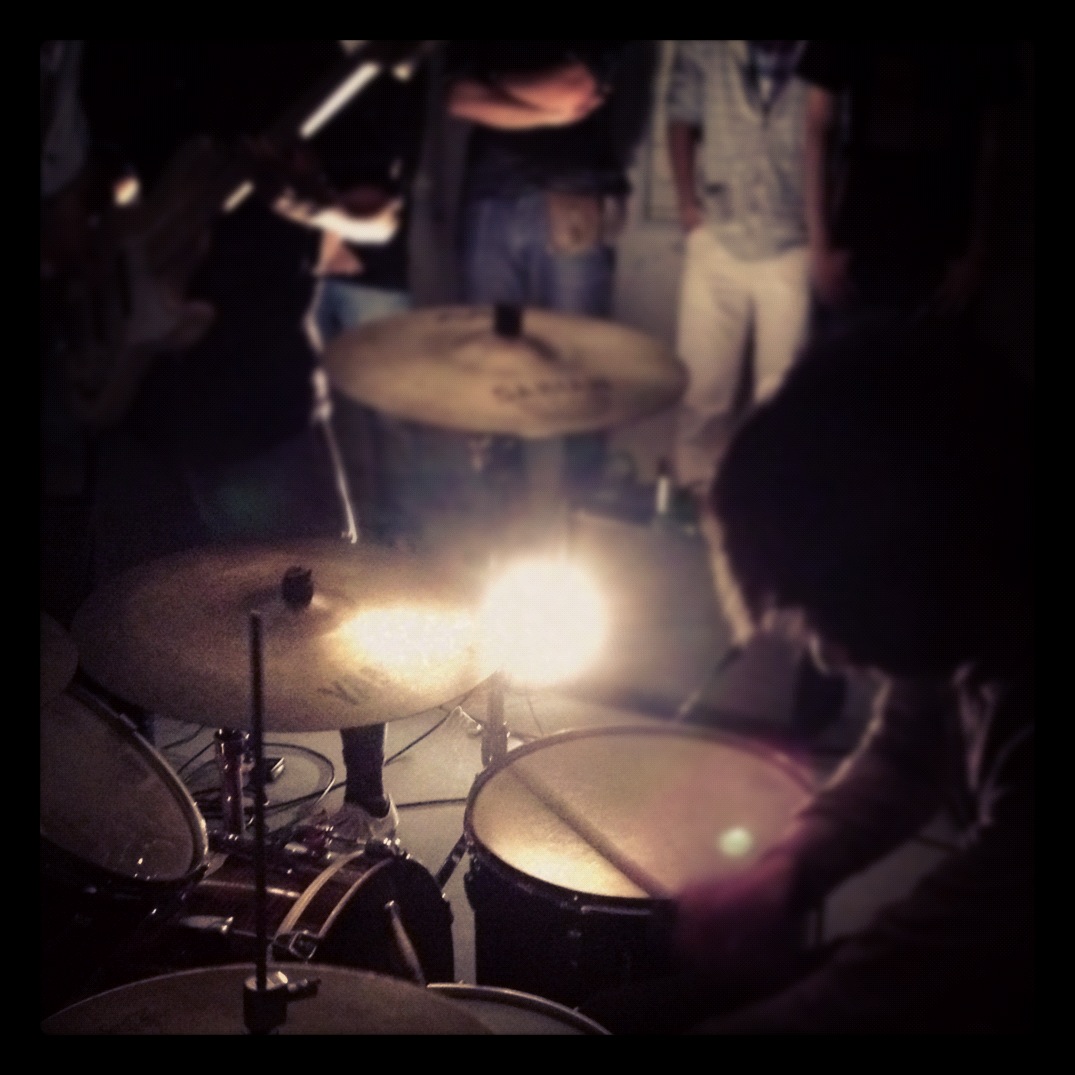This semester I’ve been going to Kyudo, or Japanese archery practice twice a week at the Budou Center. I was fortunate that on my first visit I met Kawaguchi Sensei, a petite and energetic 80-year-old woman. She was wonderful despite the language barrier and we’ve all come to really love her. Other than we few gaijins at the dojo, everyone else, mostly Japanese, has been practicing there for at least a while. I was surprised at how tirelessly Sensei devoted her time to teaching us, some of us knew zero Japanese. Other members of the dojo do not normally come up and talk to us, but if I ask for help or questions in general they have been very patient and kind. The dojo is also very international and I met so many interesting people there. Three professional artists (pianist, photographer, multimedia artist) from German started practicing with us around the same time and we’ve cultivated friendship and been going to their performances and such.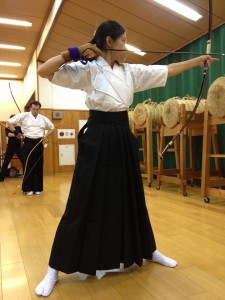
For me at first, as someone who has practiced Western archery before, I was surprised to find how ritualized Kyudo is as a martial art. I wasn’t very sure if I could stand the endless aisatsu, or greetings, or the left-foot-first-right-foot-second sort of ritualized steps, but slowly I’ve gotten used to it and begun to appreciate the beauty in these traditions. Life in Kyoto has been quite busy and overwhelming but I found my times at Kyduo, twice a week, to be the most calming. It’s only at the dojo that I can clear my head of everything and just focus on one thing, the arrow.
My second activity is the Gakusei Terebi circle, or the Doshisha Student TV circle. GakuTere makes TV specials, documentaries, commercials aimed at Doshisha students. This sounds very intense but the atmosphere is very relaxed. My circle-mates have been very friendly especially considering how little I understand and speak Japanese. Since I was the only person joining the circle this semester (because most people joined in April), I was invited to many hot pot parties or events of that nature, which made me feel very welcomed.
The biggest difficulty with Gakusei Terebi, however, is definitely the language barrier. Unlike Kyudo, where you don’t need to communicate with others too much most of the time, communication is everything in Gakusei Terebi. People speak very fast there, mixed with kansai-ben, and, in typical Japanese fashion, never ends a sentence and just goes on with 〜て、〜て、〜けど…, so it’s easy to lose track of what one’s saying. This is not to say that I did not enjoy the experience at Gakusei Terebi. I’ve been to both bangumi-making sessions and their parties, and even though I am still in the kengaku stage and can only say that I understood about 40% of what they say most of the time, I have enjoyed and value my experience at GakuTere very much.

